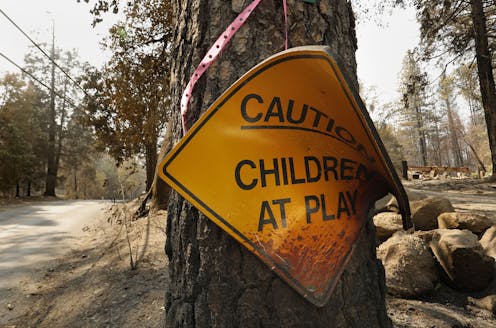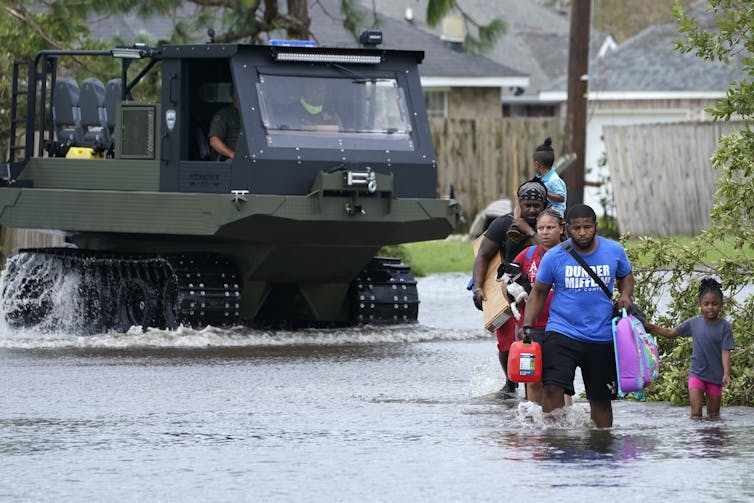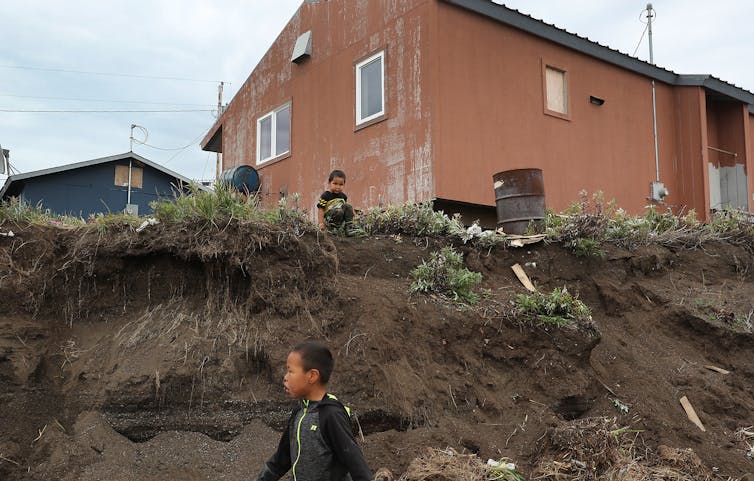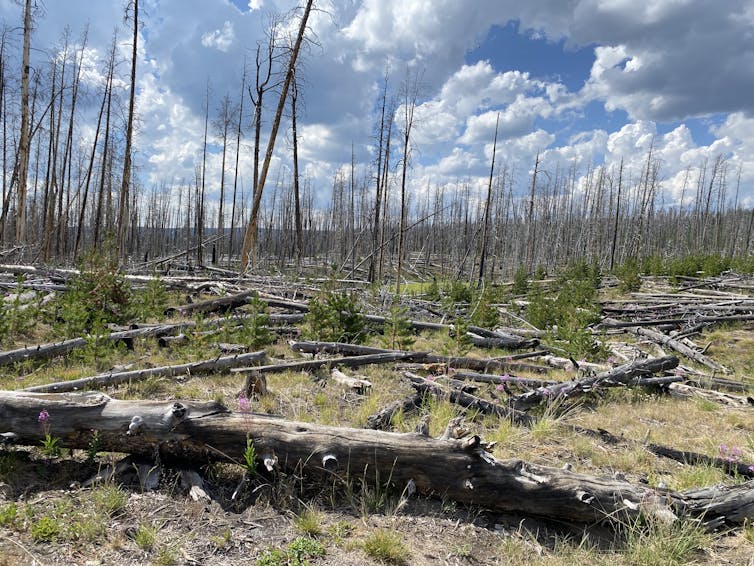
When I was a young researcher studying how forested ecosystems recover from wildfire, I brought my 6-month-old daughter with me to Yellowstone National Park. These forests are incredibly resilient to wildfire because they’ve been adapting to it for 10,000 years. Their story of resilience was a hopeful narrative as I began my research career and brought my children into this complex world.
Fast forward to today: My daughter is now in college, and we are facing a much different fire regime in a hotter, drier world. In the western U.S., the area burned by wildfires has doubled since the mid-1980s compared to natural levels. Wildfires are now more common, from the tundra to the tropics. And the U.S. is seeing fires year-round.
A new report from the United Nations’ Intergovernmental Panel on Climate Change, released Feb. 28, 2022, shows that the extent and magnitude of many climate change impacts like wildfires are now larger than previously expected. Some animals and plants are reaching limits in their ability to adapt. Droughts are affecting crop productivity and power generation. Excess heat and flooding are helping diseases to spread in agriculture, wildlife and people. People who work outdoors or live along the coast are especially vulnerable. The social and economic impacts are also growing, with consequences for critical infrastructure, transportation networks, health and food security.
My third child in now 9 years old. According to the IPCC report, his future will include about four times as many extreme events compared to the experience of someone in their 60s today – and that’s if nations reduce fossil fuel use enough to hold global warming to 1.5 degrees Celsius (2.7 Fahrenheit) over pre-industrial times. It’s even more dangerous if they don’t.

Adapting to a changing world
The report warns that humanity has a brief but rapidly closing window of opportunity to secure a livable and sustainable future. The risks posed by climate change will be felt differently in different regions, but the most vulnerable people will face the greatest risks.
Ensuring that their voices are included in planning and decision-making is a key recommendation. For example, Indigenous peoples are on the frontlines of climate-driven catastrophes and also can be partners in their solutions. In Alaska, where I currently conduct research, sewer systems could be washed out in the next storm, and thawing permafrost is crippling critical underground food storage areas, as well as roads. I’ve seen homes set on coastal cliffs there that are eroding into the sea.

Water and food security
In North America, the report describes how the ideal climates for many crops and fisheries are shifting northward, leading to reduced productivity of key crops and livestock. The thermal habitat for salmon and trout may decline 5% to 31%, lobster and crab distributions will shift, and shellfish harvests will decline due to ocean acidification.
The impacts vary by region, but research shows climate change has generally reduced agricultural productivity growth by around 12.5% in North America since 1961, particularly in drought-prone areas. Rising global temperatures are reducing the snowpack that farms and cities rely on for water, and increased groundwater pumping in response is harming access to fresh water in some areas, particularly in the western U.S.
Adapting might mean planting different crops or conserving water. On the Colorado River, falling water levels have triggered water use limits agreed to by seven states.

Coastal and urban economies
Along U.S. coasts and in urban areas, damage from storms and sea level rise, and disruption of trade and transportation networks, are likely to cause substantial social and economic upheaval, the report says. Up to 99% of coral reefs, which provide natural protection from storms, will be lost by the end of the century in the Gulf of Mexico and along the coasts of Florida and the Yucatan Peninsula if temperatures rise just a half-degree Celsius more.
There are adaptation techniques other than building sea walls. Green infrastructure, typically vegetation in flood-prone areas, can help manage some floodwater. Some communities are also thinking about managed migration to help move residents out of harm’s way.
Another big risk is heat-related deaths and illnesses, particularly among outdoor workers and poor urban residents. How much it increases in the future will depend on how people and countries respond.
Worsening wildfires
Last year, I was back in Yellowstone with my 9-year-old son, and I revisited the places I had been as a young researcher. Rather than a scene of resilience, wildfires had returned in just 18 years, burning landscapes that under natural conditions weren’t supposed to burn again for 150 years.
What my colleagues and I saw matched what our research was showing: the potential for the Yellowstone landscape to be transformed by fire. It also showed how these changes are less than a lifetime away.

As temperatures rise, wildfire frequency is projected to increase about 30% globally by the end of the century if greenhouse gas emissions continue at a high rate. Fires will release more carbon dioxide into the atmosphere, where it further exacerbates climate change, and they will worsen air quality for billions of people.
Strategies exist to help avoid the worst harm. Restoring fire-adapted ecosystems and using forest thinning and prescribed burns, where appropriate, can help prevent megafires. Communities can take steps to reduce the fire risk by building firebreaks and following construction codes.
A window of opportunity
The IPCC report concludes that it is unequivocal that climate change has already disrupted human and natural systems and that it threatens human well-being. It also reminds us that we can change it for the better.
Many reports have described pathways to reduce greenhouse gas emissions and reach a “net zero” emissions economy to avoid the worst harm and help communities adapt.
We also need to talk about climate change with each other. If people don’t talk about it, they don’t act. A Yale survey shows that 72% of Americans think global warming is happening, but only 35% are talking about it. Talking about climate change with friends, our communities and our children in appropriate ways is critical to sparking action.
[Understand new developments in science, health and technology, each week. Subscribe to The Conversation’s science newsletter.]
Erica A.H. Smithwick receives funding from The National Science Foundation and the Joint Fire Sciences Program.
This article was originally published on The Conversation. Read the original article.







